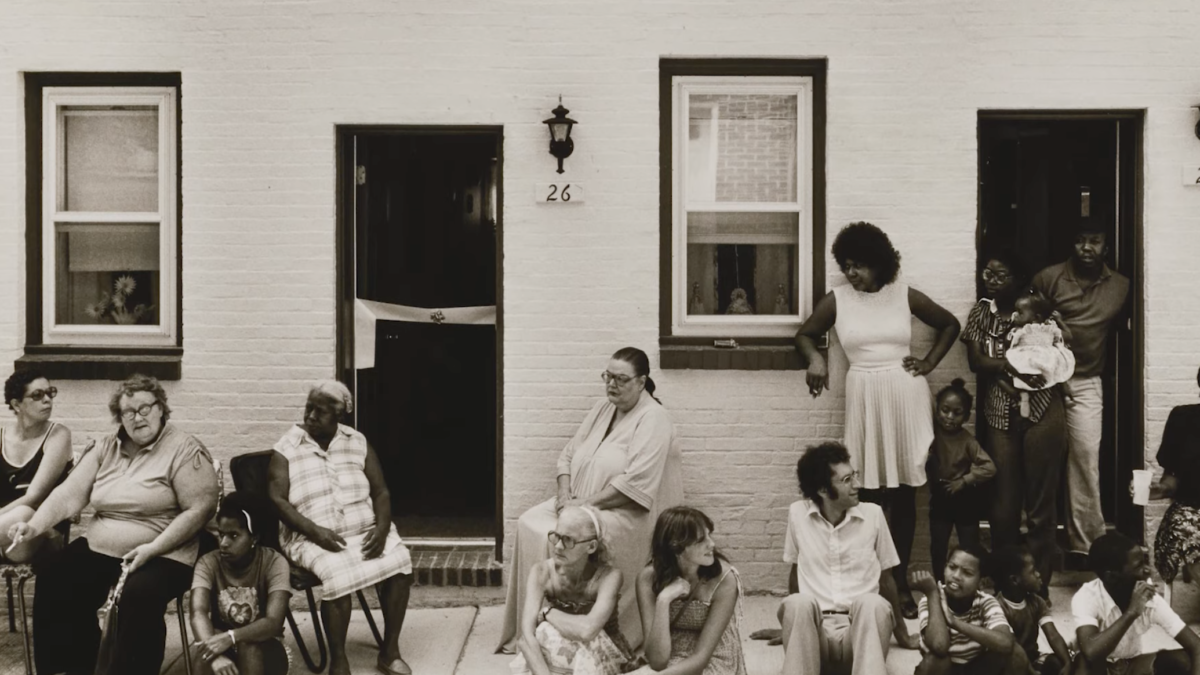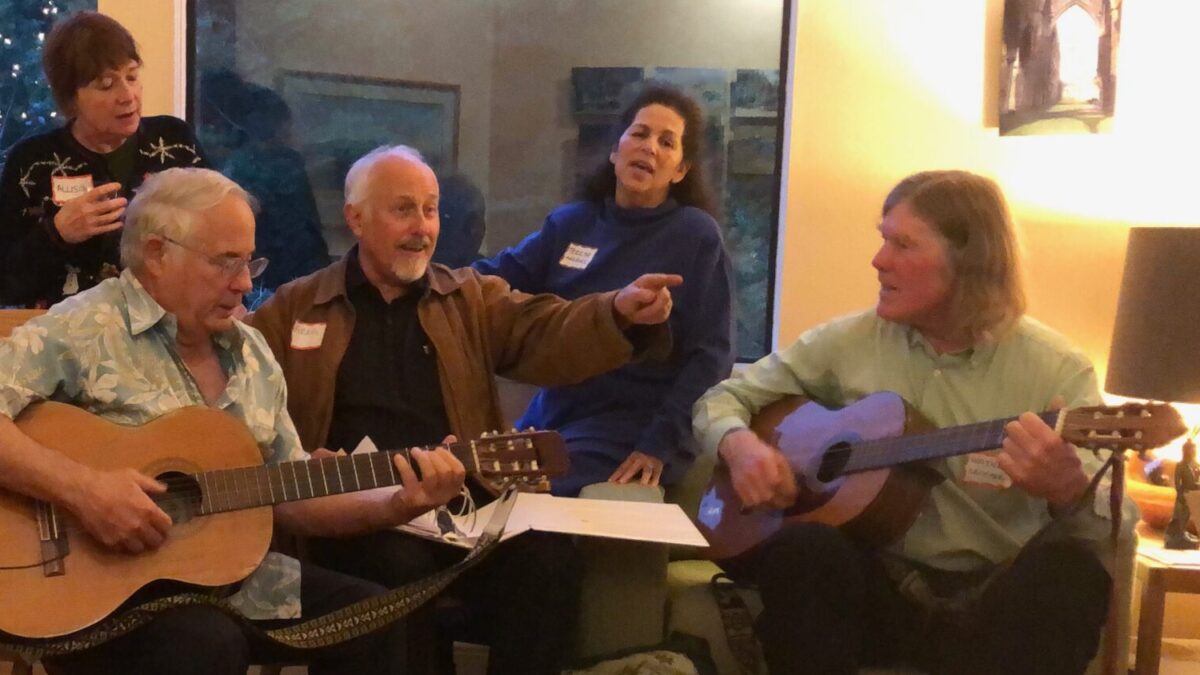In recent years, several museums of the Smithsonian Institution have engaged in inaccurate displays of American history, while often incorporating a leftist perspective that divides Americans by race. However, one exhibit, now in its closing weeks, provides a positive, uplifting perspective examining the values and ethos of one working-class community over 40 years ago.
Hosted by the Smithsonian’s American Art Museum, “Welcome Home: A Portrait of East Baltimore, 1975-1980” highlights one of a series of photographic projects commissioned by the National Endowment for the Arts to celebrate the nation’s bicentennial. Unique among the NEA commissions, the East Baltimore project was created and led by three female photographers.
A Proud Working Community
In her funding application, project leader Linda Rich wrote that “while many urban communities seem to be fighting a losing battle against physical, emotional, and spiritual decay, East Baltimore continues to grow and change, preserving its culture and humanity.”
The photographs in the exhibit have preserved that humanity across the generations, capturing the dignity of a community and its people. Whether shooting at a place of business — the office of a doctor who graduated from medical school in 1922, yet still examined patients four mornings a week 57 years later — or in people’s homes, the residents’ pride shines through.
Consider one photograph’s caption: “Mary and Michael Kujawa raised five children in their two and a half bedroom row house in Canton. They take considerable pride in the maintenance of the alley at the rear of their home.” The photograph of the couple in their living room, a crucifix above the transom, reflects a sense of place — both the intimacy of their house, and the broader community in which they take so much pride.
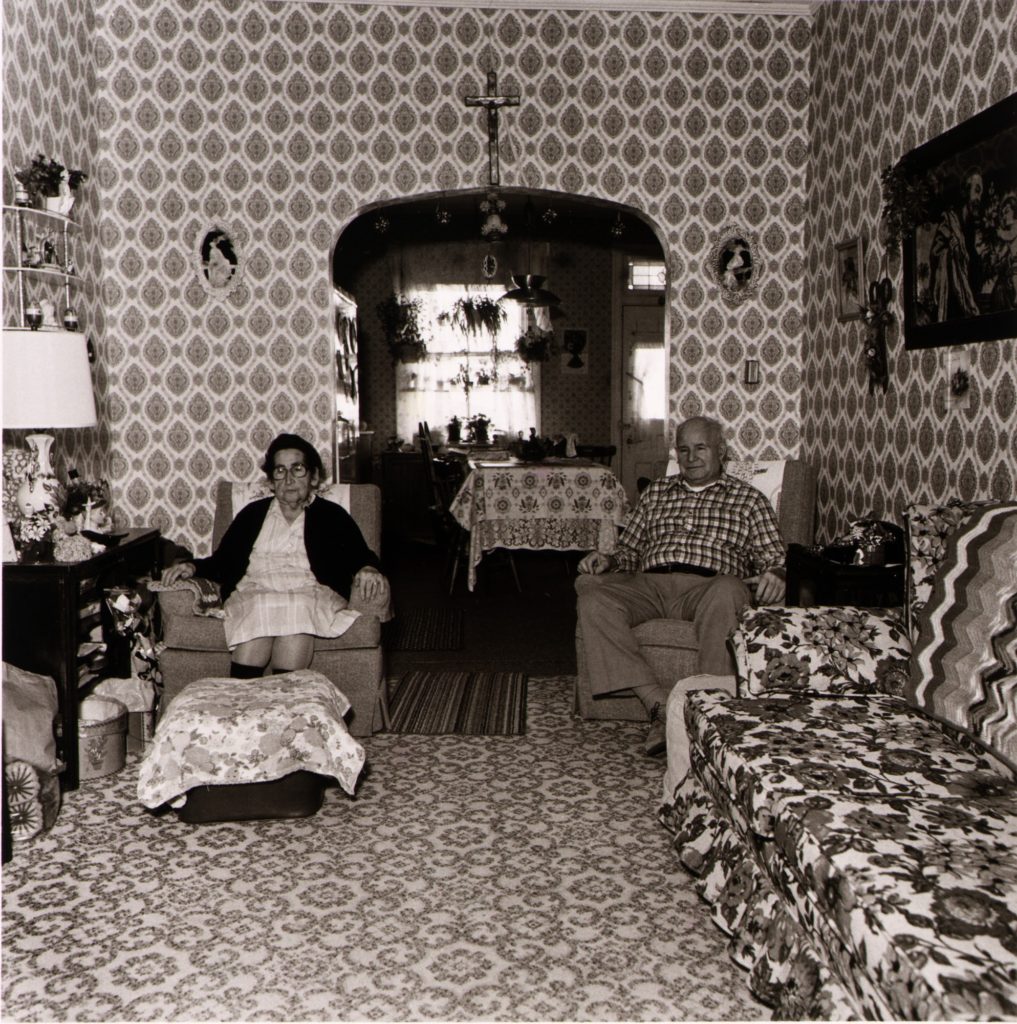
Community and Faith
The project shows a vibrant community, including social institutions foreign to some contemporary urban millennials, but still active in many parts of the country. A collection of Memorial Day wreaths on display at the Veterans of Foreign Wars post, and Polish American War Mothers gathering on Memorial Day, show a flourishing civil society within the community.
Church and faith provide a centering focus to the community. Inside homes, a Ukrainian icon or personal shrine give places for quiet worship and contemplation.
Within the community, the photographs show, church-related events maintain a rhythm to the days and the seasons. From a congregant reading daily prayers at B’nai Israel Shul, to an All Souls Day procession, to a parade before Palm Sunday Mass, these rituals see members of the community gathering to practice their shared faith and shared heritage.
Churches host important rites of passage — from Greek Orthodox christenings to first communions, to a couple renewing their vows on their 50th wedding anniversary at Holy Rosary Church. They also provide more mundane entertainment, from a fashion fundraiser to rebuild St. Stanislaus’ church hall damaged by fire, to bingo at St. Casimir’s church.
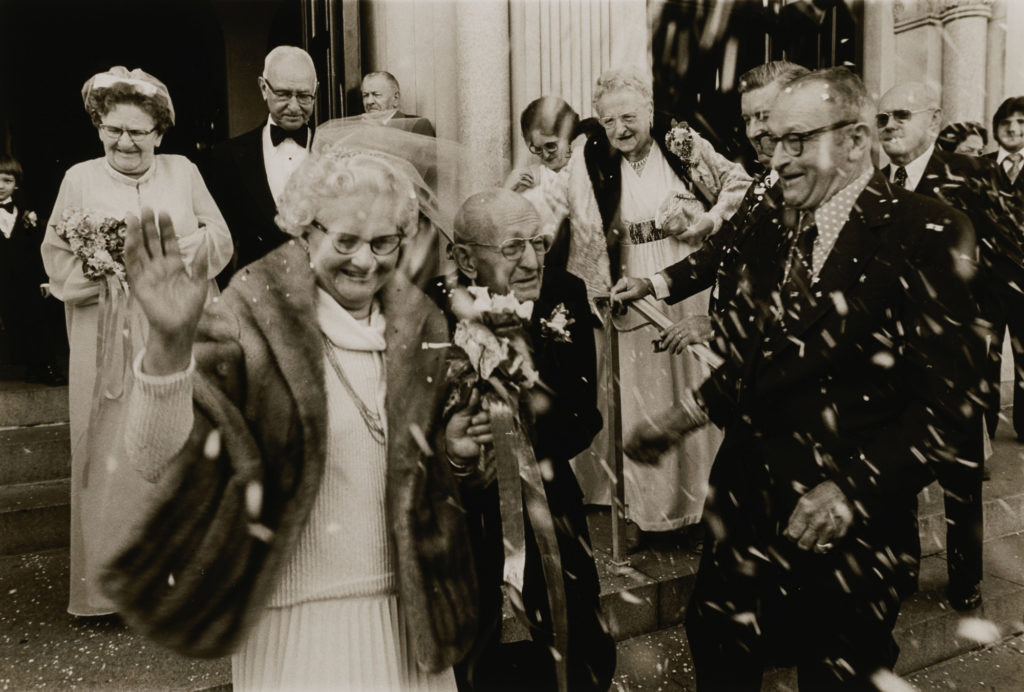
‘I Am an American’
Faith provides one source of diversity within East Baltimore. Individuals identify with a particular church, often associated with their country of origin — the Ukrainian church, the Polish church, and so on. Yet even as they maintain their ethnic roots, they also quickly identify with their new homeland.
The community had an event for just such a purpose — “I Am An American Day,” complete with its own parade. Held since 1938, the parade by some counts would take four hours to pass by the community.
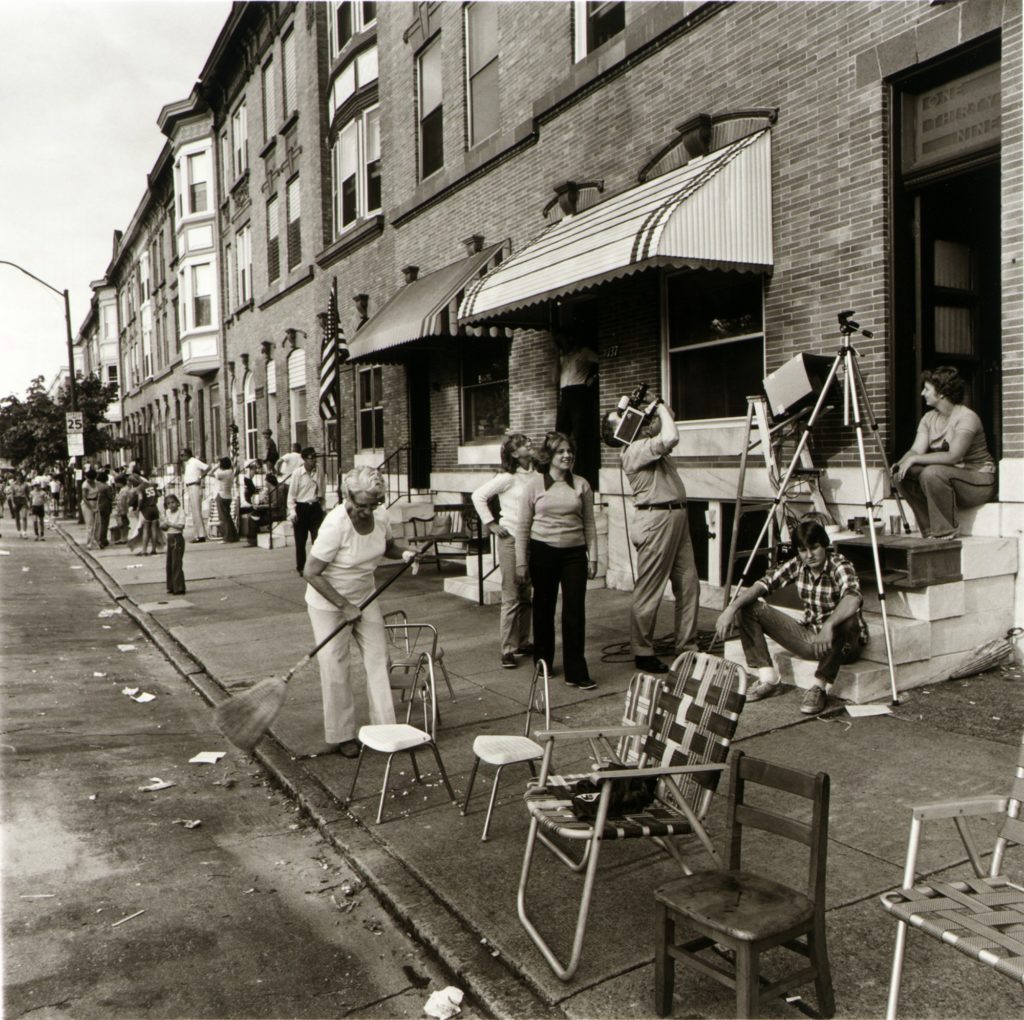
That theme of unity pervades the exhibit. The photo project features East Baltimore residents of all ages and colors, from Korean children at graduation exercises to an Indian family in their living room. Photos of individuals at their workplaces include African Americans at a fish stand, a Greek-owned market, a German barber, and an Irish pub on St. Patrick’s Day.
All these individuals came to East Baltimore to live the American Dream. The confidence with which they showed their pride spoke to the photographers who captured this community’s essence: “The values and traditions of its people were everywhere. These people and their neighborhood continued to be in a part of my thoughts long after the day of the [I Am An America] parade.”
The community members took a similar pride in participating in the project, building trust and a rapport with the photographers, and bragging when their photographs got displayed in small community exhibitions. The obituary of Peter Frenchy, who renewed his vows on his 50th anniversary, said he considered his involvement in the project the highlight of his life.
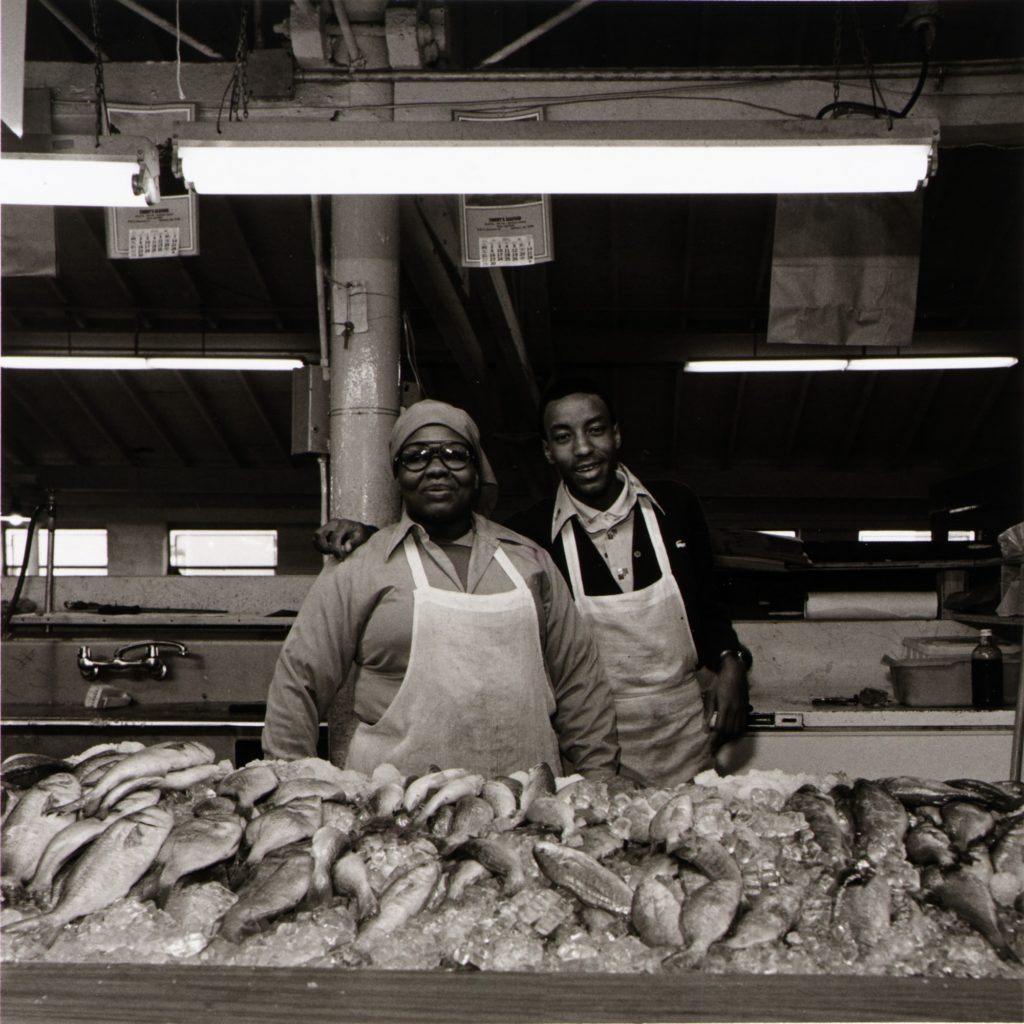
Enduring American Values
Doubtless, the neighborhood of East Baltimore experienced problems during and after the photography project, as the stagflation of the 1970s prompted waves of urban flight and gentrification. But the photographs on display at the Smithsonian show values that endure today just as they did then: Pride in community; the dignity of work; faith in a higher power as well as one’s fellow man; and a sense of common purpose, of celebrating one’s common creed as Americans despite our diverse roots.
The strength of those values and the people exhibiting those values, nearly half a century ago should inspire 21st century Americans to follow those same values today.
“Welcome Home: A Portrait of East Baltimore, 1975-1980” is on display at the Smithsonian American Art Museum through January 19. Most of the photographs from the exhibition — by artists Elinor Cahn, Joan Clark Netherwood, and Linda Rich — are available online.
